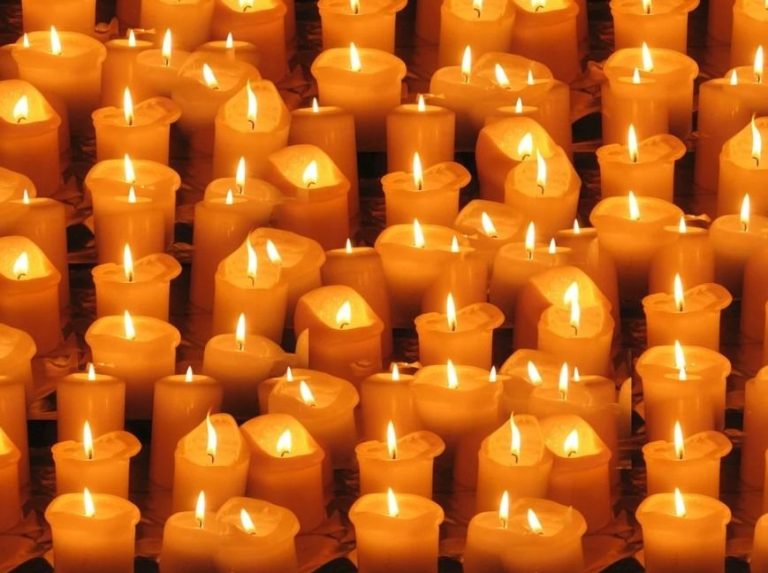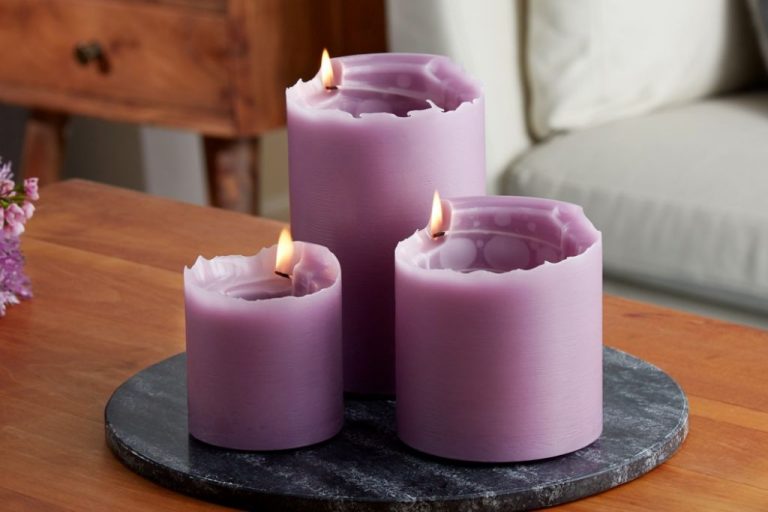Is It Light Up Or Lit Up A Candle?
The question of whether it is “light up” or “lit up” a candle relates to the correct grammatical form of the verb phrase. Both phrases are commonly used in relation to lighting candles, leading to uncertainty over which option is actually correct or preferred. This article will examine the grammatical rules and conventions behind these two verb forms, looking at when each is properly used along with examples and historical context. The goal is to provide a definitive answer on the correct usage of “light up” versus “lit up” when talking about candles.
Definitions
The phrases “light up” and “lit up” have slightly different meanings in English:
Light up is a phrasal verb meaning to make something start burning or glowing. For example: “She lit up a candle.” It refers to the act of igniting or setting something on fire.
Lit up is the past tense and past participle of the verb “light up.” It refers to something already being illuminated or on fire. For example: “The candles were lit up.” It describes the state of something that is currently glowing or burning.
So “light up” refers to the action of starting a flame, while “lit up” means it already has a flame and is glowing.
Grammar Rules
The main grammar rule for knowing when to use “light up” versus “lit up” has to do with verb tense.
“Light up” is present tense, while “lit up” is past tense. So:
- “Light up” refers to the present – for example, “I light up a candle every evening.”
- “Lit up” refers to the past – for example, “I lit up a candle last night.”
Some other grammar rules:
- “Light up” can be used in the imperative (command form), as in “Light up the candle!”
- “Lit up” cannot be used in the imperative.
- Both “light up” and “lit up” can be used in passive voice constructions. For example: “The candle was lit up by me.”
So in summary, use “light up” for present tense and the imperative, and “lit up” for past tense.
Usage: When to Use “Light Up” vs “Lit Up”
The main difference between “light up” and “lit up” is that “light up” is present tense while “lit up” is past tense. Here are some guidelines on when to use each phrase:
“Light up” should be used when referring to the present moment or future events. For example:
- I’m going to light up this candle now.
- The candles light up the room with a warm glow.
- Whenever she sees the candles, her face lights up with joy.
“Lit up” should be used when referring to something that already happened in the past. For example:
- I lit up a candle last night.
- The room was lit up by dozens of candles.
- Her face lit up when she saw the surprise party.
So in summary, use “light up” for present/future and “lit up” for the past tense.
Examples
Here are some example sentences showing the correct usage of “light up” versus “lit up”:
The candlemaker carefully lit up the candle’s wick with a long match.
After lighting up the candle, John admired how the flame flickered in the dark room.
The scented candle lit up the cozy living room with a lovely lavender aroma.
I lit up a citronella candle to help keep the mosquitoes away while we ate dinner outside.
The students lit up sparklers to celebrate the Fourth of July.
We lit up the fireplace to warm the cabin on that cold winter night.
The church was beautifully lit up for the Christmas Eve service.
I saw that someone had lit up a candle next to the grave.
The jack-o-lanterns lit up the porch with their flickering grins.
Regional Differences
There are some regional variations in the usage of “light up” versus “lit up” a candle. Here are some of the key differences:
In American English, both “light up” and “lit up” are commonly used interchangeably when referring to lighting a candle. However, “light up” may be a bit more prevalent.
In British English, “light up” is more common when referring to lighting a candle for the first time. “Lit up” is more likely to be used when referring to a candle that is already burning.
In Australian English, “light up” is broadly used for both initially lighting a candle and referring to an already burning candle. “Lit up” is less common.
In Canadian English, both terms are used, but “lit up” may be a bit more prevalent, especially in Eastern Canada. Western Canadians likely use both forms interchangeably.
In general, while there are some slight regional preferences, both “light up” and “lit up” a candle are broadly understood everywhere. The key difference is that “light up” may imply the initial lighting, while “lit up” can refer to an already burning candle.
Historical Usage
The phrases “light up” and “lit up” have been used in the English language for centuries, though their usage has evolved over time. In Old English, the verb “onlihtan” meant “to illuminate or light up.” This evolved into the Middle English verb “lihten,” meaning “to start burning.” By the 14th century, the past tense form “lit” emerged. For example, in Geoffrey Chaucer’s Canterbury Tales (1387), he wrote “He gan karpen, and sang / Litil he roghte of cappe or ring.”
In the 16th and 17th centuries, “light up” was more common, as the phrasal verb construction was gaining popularity. Shakespeare used “light up” in several of his plays. For example, in The Winter’s Tale (1623), he wrote “Who’s there? What, my young lady? O Lady, / We’ll light up candles.”
By the 18th century, both “light up” and “lit up” were in common usage. In poetry and literature, writers tended to use “lit up” more often to fit the meter and rhythm. But in everyday speech, “light up” was likely more common. This pattern continued into the 19th and 20th centuries. Today, both phrases are commonly used in all contexts.
In Literature
The phrase “light up a candle” has been used in classic works of literature dating back centuries. For example, in William Shakespeare’s play Julius Caesar, Antony says “Here was a Caesar! When comes such another?…O, pardon me, thou bleeding piece of earth, That I am meek and gentle with these butchers! Thou art the ruins of the noblest man that ever lived in the tide of times. Woe to the hand that shed this costly blood! Over thy wounds now do I prophesy– Which, like dumb mouths, do ope their ruby lips, To beg the voice and utterance of my tongue– A curse shall light upon the limbs of men.” In this instance, “light upon” means to fall upon or afflict someone.
Another example is from John Milton’s epic poem Paradise Lost, in which he writes “Hail holy light, offspring of Heav’n first-born, Or of th’ Eternal Coeternal beam May I express thee unblamed? since God is light, And never but in unapproached light Dwelt from eternity, dwelt then in thee, Bright effluence of bright essence increate.” Here Milton uses “light” poetically to represent God and heavenly grace lighting upon the Earth.
So we see established authors have often used the phrase “light up” figuratively to mean something coming upon or visiting someone or something. The literal phrase “light up a candle” is less common in classical literary works.
In Popular Culture
The phrase “light up a candle” can be found in many examples of popular culture, from song lyrics to movie quotes. Here are a few examples:
In the classic holiday song “Have Yourself A Merry Little Christmas,” the lyrics include the line “From now on our troubles will be miles away.” This demonstrates the use of “light up” rather than “lit up” when referring to lighting a candle.
In the movie Harry Potter and the Prisoner of Azkaban, the character Hermione Granger says, “We’ve got to light up our wands out here.” This quote shows the use of “light up” in reference to lighting their magic wands, which function similarly to candles.
The song “Light Up The Night” by the band The Protomen includes lyrics about lighting up the darkness: “In the night, light up the night. When your cities lie in dust, what will rise from the ashes?” This is an example of using “light up” in a metaphorical sense.
Overall, the phrase “light up a candle” can be found across different genres and mediums in popular culture when referring to the act of lighting a candle or lighting something up in a more general sense.
Conclusion
In summary, both “light up” and “lit up” are commonly used phrases in English. “Light up” is used to describe the action of something burning or illuminating, while “lit up” refers to something already burning or illuminated.
When writing or speaking, it’s best to follow standard grammar rules – use “light up” for the present tense and “lit up” for the past tense. However, in informal contexts, native English speakers often use “light up” and “lit up” interchangeably.
The key recommendation is to be consistent within a given text. Pick one phrasing and stick with it, rather than switching back and forth randomly. This will make your meaning clear. While variations in usage exist across regions and eras, the core grammar rule remains constant.
In the end, the choice comes down to context, audience, and stylistic intent. Both “light up” and “lit up” have their place in the English language.





